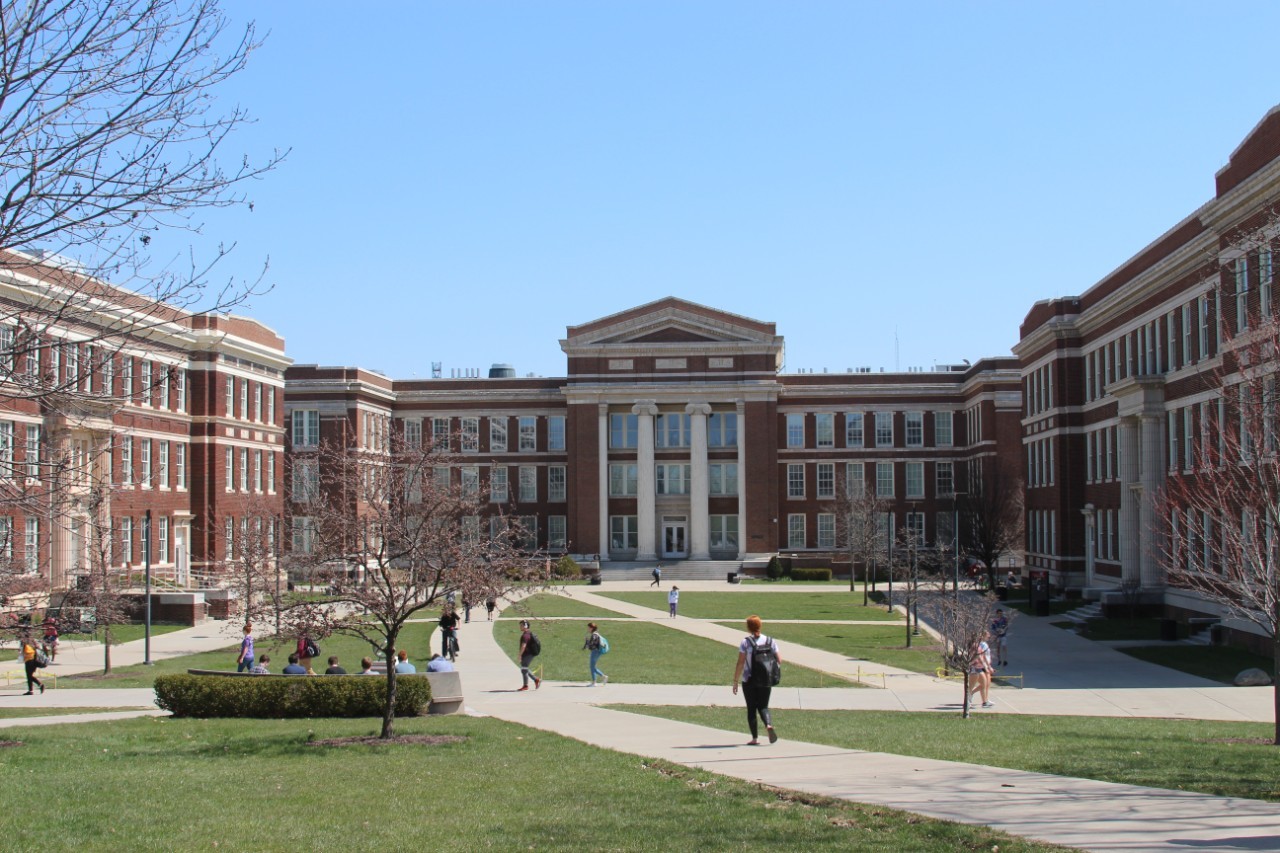
UC begins planning for new AI center
UC's Center for Industrial Artificial Intelligence will meet emerging needs in industry
For the nearly two decades, the Center for Intelligence Maintenance Systems (IMS) in the Department of Mechanical and Materials Engineering at the University of Cincinnati (UC) has led the way in developing and deploying advanced manufacturing technologies for many industries and organizations, worldwide.
Since its founding in 2001, IMS has been the internationally recognized leader in predictive analytics and industrial big data modeling for the life cycle performance of industrial systems. IMS has had more than 100 global members, 200 government- and industry-funded projects, five patents, two spinoff companies and countless awards and achievements in this field.
Now, IMS will soon be graduating from the National Science Foundation-funded (NSF) Industry-University Cooperative Research Center program. The Center will continue to lead the way in innovation and industry-focused research under a new name: The Center for Industrial Artificial Intelligence (Industrial AI).
Like the IMS Center, this new Center will be comprised of three university sites: the University of Cincinnati (lead), the University of Michigan and the University of Texas at Austin. This new center, however, will involve professors and researchers from a wider range of fields, such as healthcare, additive manufacturing, autonomous controls and robotics.
On July 19, Industrial AI held a New Center Planning Meeting at the IBM TJ Watson Research Center in Ossining, New York, to lay out its research direction and ensure that it correlates with industry need.
Industrial AI’s mission focuses on artificial intelligence solutions that integrate what professor Jay Lee refers to as “ABCDE: AI, Big Data, Cloud, Domain and Evidence to bring operational, technological and economic impacts to a wide range of industries, including aerospace, energy, healthcare and manufacturing, among others.”
“We started in the manufacturing sector 18 years ago,” says Lee, a PhD and professor of mechanical engineering at UC and director of IMS. “Now, we’re building on this success in new areas.”
This success is a direct result of strategic research investments in several global technologies: industrial big data, prognostics and health management, cyber physical systems and industrial artificial intelligence.
These areas all relate to Industry 4.0, a combination of traditional manufacturing and industrial practices with technological innovation. Lee calls Industry 4.0 the “new revolution of manufacturing that will dominate the next generation.” A cornerstone of this revolution will be in the Center’s namesake: industrial artificial intelligence.
“Traditional artificial intelligence is more like cognitive science,” says Lee. “Data scientists create learning algorithms to replace human beings, like in self-driving cars.
“The problem with that approach, however,” he says, “is that it is more trial and error, and not a systematic engineering approach. We are going to use algorithms that can verify and validate industrial system processes and do it in a systematic way.”
The Center envisions the future of maintenance as a system that achieves and sustains near-zero breakdown performance with self-maintenance capabilities. Much of the Center’s past success has been rooted in its “predict and prevent” practices. Rather than wait until a problem happens on the manufacturing floor, the Center employs tools that can assess and predict potential machine failure, minimizing productivity losses that result from unplanned downtime.
The core technology behind this is the Watchdog Agent, a collection of customizable software tools that monitor equipment and systems. Researchers use sensors and data acquisition systems to accumulate raw data on an equipment’s performance. The Watchdog Agent then uses various tools to analyze this data and determine if the performance of the equipment falls below a certain threshold. This technology, therefore, can determine the type and location of a predictive fault, predicting and preventing failures in real-time.
UC and IMS has a long history of success of applying these technologies in the industrial sector, working closely with over 100 unique members from research firms, academia and industry, including Procter & Gamble, Mazak, Parker Hannifin, Toyota, ALSTOM Transport, Hitachi, CSSC Electronic and Goodyear, among many others.
The meeting at IBM is coming at an exciting time for UC, which recently launched Next Lives Here, the university’s strategic direction that emphasizes academic excellence, urban impact and an innovation agenda.
Echoing these three platforms, the Center of Industrial Artificial Intelligence is shaping a smarter, more sustainable future. With 35 current members representing five different countries, Industrial AI and UC will continue to have an impact both across the country and around the world.
Next Lives Here
The University of Cincinnati is classified as a Research 1 institution by the Carnegie Commission and is ranked in the National Science Foundation's Top-35 public research universities. UC's graduate students and faculty investigate problems and innovate solutions with real-world impact. Next Lives Here.
Related Stories
It’s a mindset: Meet the visionaries redefining innovation at...
December 20, 2024
Innovation is being redefined by enterprising individuals at UC’s 1819 Innovation Hub. Meet the forward thinkers crafting the future of innovation from the heart of Cincinnati.
UC students well represented in this year’s Inno Under 25 class
December 20, 2024
Entrepreneurialism runs through the veins of University of Cincinnati students, as confirmed by the school’s strong representation in this year’s Inno Under 25 class.
UC professor Ephraim Gutmark elected to National Academy of...
December 20, 2024
Ephraim Gutmark, distinguished professor of aerospace engineering at the University of Cincinnati, was elected to the 2024 class of the prestigious National Academy of Inventors.
